Homeowners need to discover economical heating solutions for their houses because energy prices continue to rise and the UK winter season approaches. Windows serve as the main point where a house loses most of its heat energy.
Draughts create cold spots which force your heating system to work harder resulting in increased energy expenses. Professional solutions create the best permanent results but budget-friendly DIY draught-proofing options exist to enhance home comfort and lower energy costs.
The guide provides step-by-step instructions for window draught-proofing using various techniques which include basic cost-effective solutions and more complex approaches.
We will assess the price points and operational performance of these options to identify their best applications for traditional timber sash windows.
Temporary solutions serve as the first step which leads to permanent solutions such as professional draught-proofing and double glazing.
Draughts create problems which reach beyond simple discomfort. According to the Energy Saving Trust a typical UK semi-detached home can save approximately £85 each year by sealing windows and doors to prevent draughts.
Open chimneys create the most financial advantages for home properties. The financial benefits of drought detection become clear through these data which show more value than the direct savings from cost reduction.
A draught-free home creates a more comfortable living space. The removal of cold areas enables you to keep a comfortable room temperature while operating your heating system at a reduced thermostat setting.
Homeowners can save £90 annually by lowering their thermostat setting by one degree according to the Energy Saving Trust. The enhanced home protection system keeps out weather elements which prevents dampness and condensation that results in major issues such as mould development and timber deterioration.
The initial step of draught-proofing requires you to identify the exact locations where air leaks into your home. Windows develop draughts because of the empty spaces between their fixed parts and their operational components. The following items serve as common causes:
You can detect draughts by using the simplest method which requires you to hold a burning candle or incense stick near the window while it is windy outside and watch for flame flickering or smoke movement.
The door gaps become visible because you can feel cold air through your hand and you also see daylight coming through the spaces.
DIY draught-proofing solutions consist of inexpensive temporary solutions and more permanent durable systems. The following methods stand as the most common techniques for comparison:
| Method | Cost | Durability | Ease of Installation | Best For |
| Self-Adhesive Foam Strips | Very Low (£3-£5 per roll) | Low (1-3 years) | Very Easy | Quick fixes, casement windows |
| Brush Strips | Low (£5-£10 per roll) | Medium (3-5 years) | Easy | Sliding sash windows |
| Wiper Strips (V-Strips) | Low (£5-£10 per roll) | Medium (3-5 years) | Easy | Casement and sash windows |
| Silicone Sealant / Caulk | Very Low (£3-£7 per tube) | High (5-10 years) | Moderate | Gaps between frame and wall, fixed windows |
| Insulating Window Film | Low (£10-£20 per kit) | Low (1 season) | Moderate | Single-glazed windows, reducing heat loss |
| Heavy Thermal Curtains | Medium-High (£50-£200+) | Very High (Many years) | Easy | All windows, especially large single-glazed ones |
| Secondary Glazing (DIY Kits) | Medium (£50-£150 per window) | High (5-10 years) | Difficult | Single-glazed windows, noise reduction |
Self-adhesive foam strips represent the most budget-friendly and straightforward draught-proofing solution. These strips consist of compressible foam with an adhesive backing that sticks directly to the window frame.
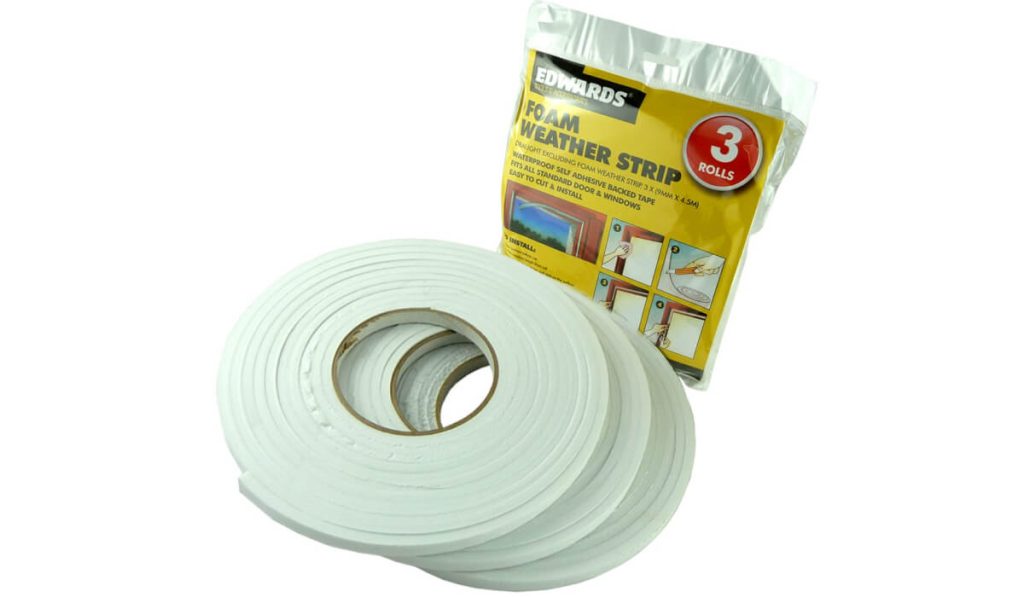
Product: 3 Rolls Draught Excluder Foam – Waterproof Self Adhesive (Amazon UK)
These strips work best for casement windows where the opening window presses against the frame. Installation involves cleaning the surface, measuring and cutting the strip to length, and pressing it firmly into place along the window frame edge.
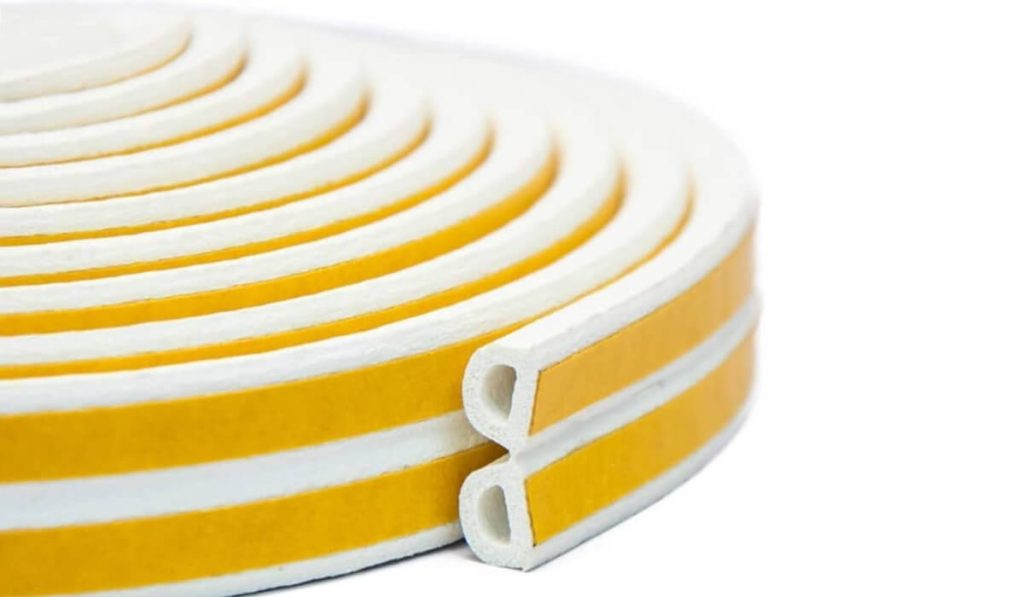
Close-up showing foam strip texture and color options available
The main advantage is the low cost and ease of installation. However, the foam can compress and lose effectiveness over time, typically lasting only 1-3 years before replacement is needed.
Brush strips, also known as pile weather strips, consist of fine bristles attached to a backing strip. They are particularly effective for sliding sash windows where the sashes move vertically past each other.
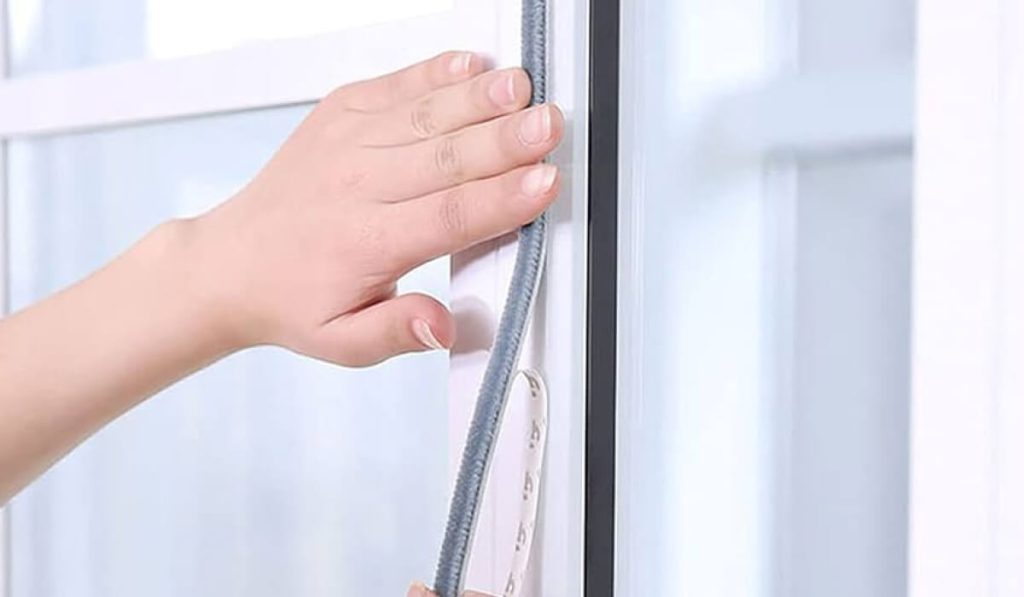
Product: Yardsky Draft Excluder Sash Window Draught Brush (Amazon UK)
The bristles create a seal while still allowing the window to move smoothly. This makes them ideal for windows that need to be opened regularly for ventilation. Installation requires measuring the window channels, cutting the brush strip to length, and either using self-adhesive backing or small pins to secure it in place. Brush strips typically last 3-5 years and maintain their effectiveness better than foam strips.
V-strips, also called tension seals or wiper strips, are V-shaped strips of plastic, metal, or foam that compress when the window closes to create a seal. They work well for both casement and sash windows.

Product: Stormguard Self-Adhesive V Seal Tape – Brown, 5m (Amazon UK)
The V-shape allows the strip to compress and expand, maintaining a good seal even as the window frame expands and contracts with temperature changes. This makes them more durable than flat foam strips.
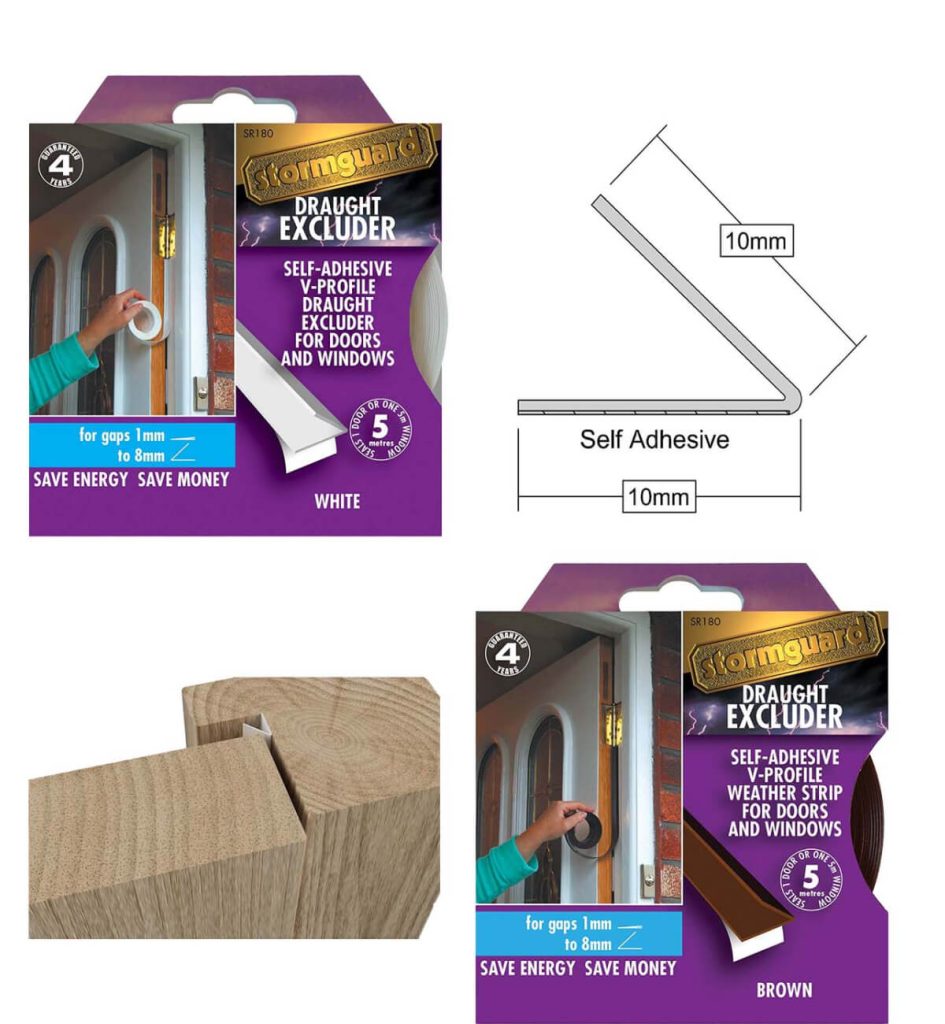
Alternative: Self Adhesive V Seal Draught Proofing – White, 5m (Low Energy Supermarket)
Installation is similar to foam strips: clean the surface, measure and cut to length, and press the adhesive backing firmly in place. V-strips typically last 3-5 years and are available in various colors to match your window frames.
Silicone sealant or caulk provides a permanent solution for sealing gaps between the window frame and the wall. This method is best for fixed windows or gaps that don’t need to accommodate movement.
Application requires cleaning the gap thoroughly, applying masking tape to create clean edges, applying the sealant in a continuous bead, and smoothing it with a wet finger or tool before it dries.
Important Warning: Do not use sealant on opening parts of windows as it will permanently seal them shut. Only use on fixed windows or gaps between the frame and wall. Silicone sealant can last 5-10 years when properly applied.
Insulating window film creates a temporary secondary glazing effect by adding an extra layer of plastic film over the entire window. This traps air between the glass and the film, providing insulation and reducing draughts.
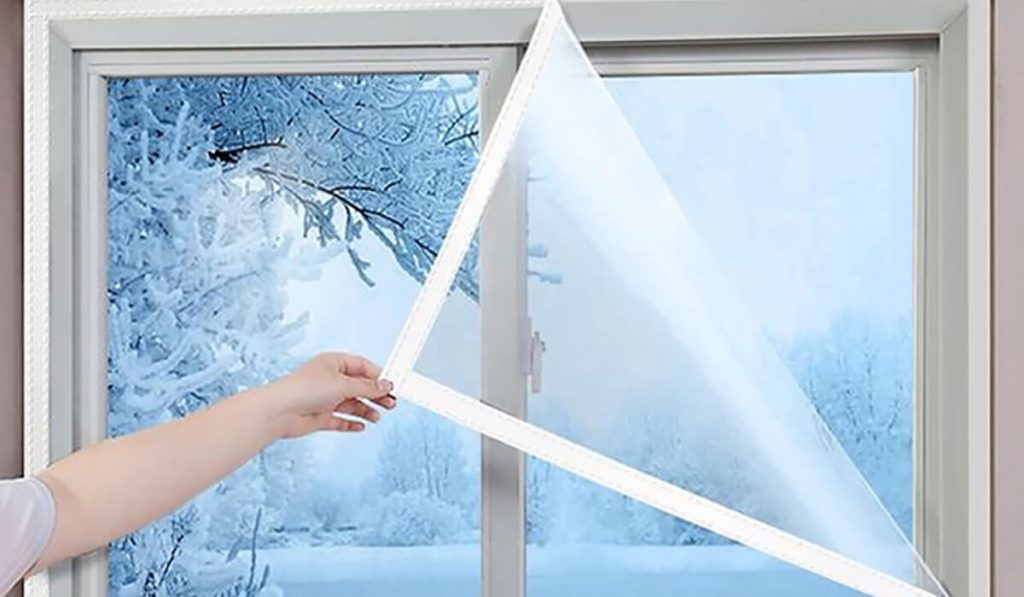
Product: Indoor Window Shrink Film Kit for insulation (Amazon UK)
Installation involves applying double-sided tape around the window frame, attaching the film, and using a hairdryer to shrink the film tight and remove wrinkles. The result is nearly invisible when done correctly.

Alternative: Window Insulation Kit 2-Pack – Shrink Fit Double Glazing Film (eBay)
This solution is particularly effective for single-glazed windows, potentially reducing heat loss by up to 30%. However, the film typically lasts only one season and must be removed in spring to allow window operation.
Heavy thermal curtains provide an effective barrier against draughts and heat loss, especially for large windows or patio doors. Quality thermal curtains have multiple layers including a thermal lining that reflects heat back into the room.

Product: Deconovo Thermal Door Curtains for Winter – 84 Inch Drop, Grey (Amazon UK)
For maximum effectiveness, curtains should be hung as close to the window as possible and extend beyond the window frame on all sides. The fuller the curtains (more fabric), the better the insulation.
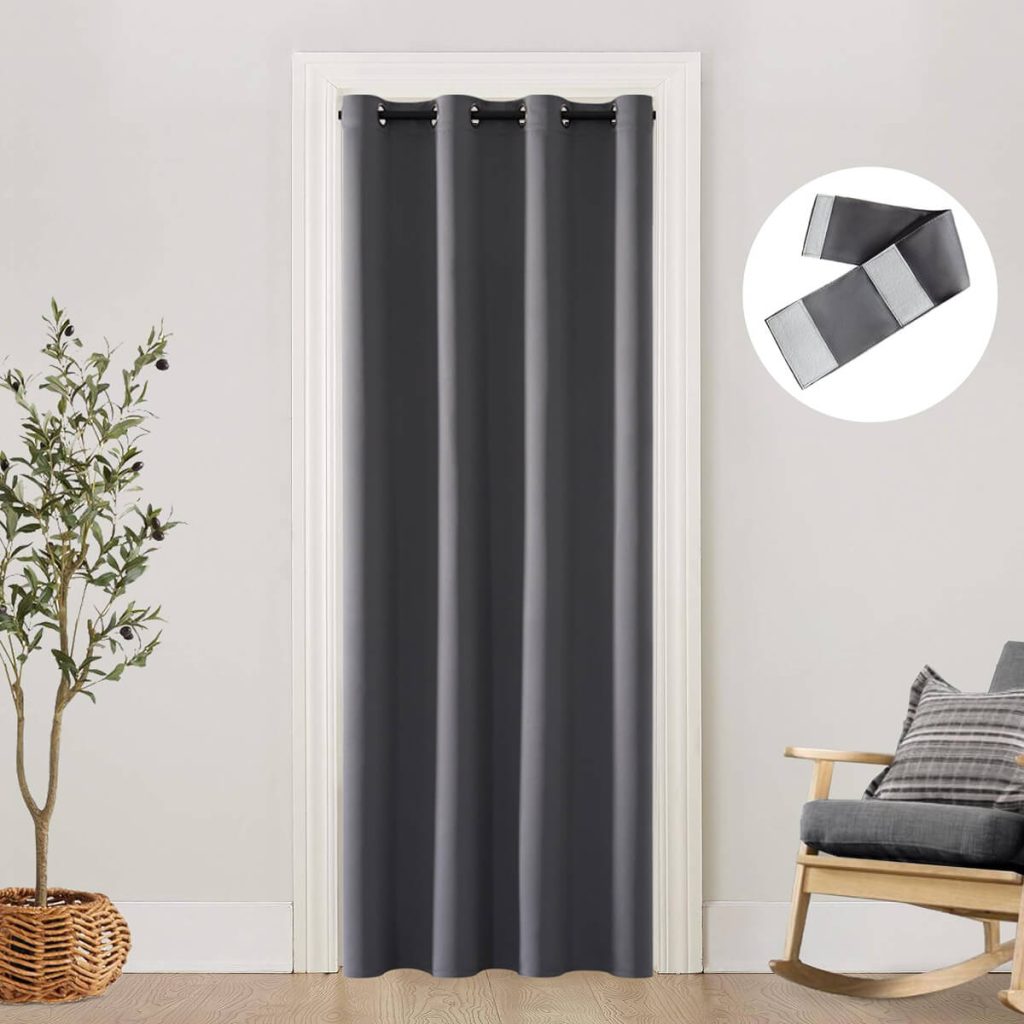
Alternative: Thermal Insulated Door Curtains – Beige/Cream showing features (Amazon UK)
While more expensive initially (£50-£200+), thermal curtains last many years and provide additional benefits including noise reduction, light blocking, and privacy. They work well in combination with other draught-proofing methods.
Secondary glazing involves installing a second pane of glass or acrylic inside your existing window. DIY kits make this more accessible, though installation is more complex than other methods.
Magnetic secondary glazing systems are among the easiest DIY options. They use magnetic strips attached to the window frame, allowing the acrylic panel to be easily removed for cleaning or window operation.
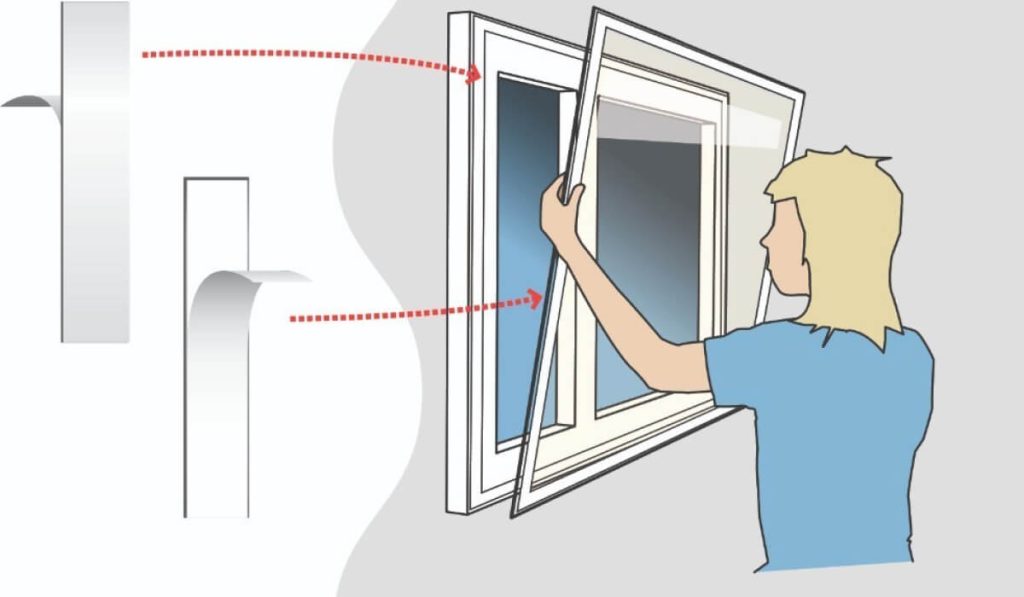
Components: DIY secondary glazing kit showing acrylic sheet and magnetic strips (eBay)
Installation involves measuring your window accurately, cutting the acrylic sheet to size, attaching magnetic strips to both the frame and the panel, and securing the panel in place. The air gap between the original window and secondary glazing provides excellent insulation.
Secondary glazing can reduce heat loss by up to 60% and significantly reduce external noise. While more expensive (£50-£150 per window) and time-consuming to install, it provides the best performance of any DIY solution and can last 5-10 years or more.
Before you start using these DIY solutions you need to learn about two important effects which could reduce window operation and cause condensation problems.
The main objective requires stopping draughts but safety standards and proper ventilation systems must remain intact.
The DIY methods disable window operation which creates a safety hazard because these windows function as fire escape routes. The device stops room ventilation which functions as a vital system to handle indoor air quality.
The window accessories foam strips and brush piles and wiper strips allow users to operate their windows normally which makes them suitable for windows that people use frequently.
The two methods of draught-proofing and condensation prevention work differently to protect a building.
People tend to believe draught-proofing will solve condensation issues in their homes. The process can lead to negative effects in certain cases. Warm moist air inside your home causes condensation when it touches cold surfaces like window panes. The entry of cold air from outside into your home creates draughts.
The process of sealing gaps helps to block cold air entry while it also blocks air movement throughout the house. The moisture produced by cooking and showering and breathing activities lacks any escape route.
Your windows will become the destination point for this humid air to condense because they represent the coldest surfaces in your home especially when they are single-glazed.
Draught-proofing your home creates a warmer environment but it does not eliminate the underlying causes of condensation. The solution to condensation problems needs two different approaches to become successful:
The main reason for heat loss and air leaks in homes stems from single-glazed windows. All of the methods described above serve as temporary solutions which fail to address the underlying problem.
Single glazing performs poorly in thermal terms which results in cold glass surfaces during winter months that produce condensation and major heat loss. The best DIY solutions for single-glazed windows involve installing insulating film and secondary glazing because these methods directly solve the problem.
The best way to create a warm home that saves energy is to invest in double glazing replacement.
Our Sash Windows Double Glazing service provides this solution by using slim-profile vacuum-sealed units that deliver triple-glazing performance while maintaining the appearance of your period windows.
DIY draught-proofing brings noticeable improvements to your home but it contains certain constraints. The seals and strips will wear out over time, and they don’t address underlying issues with the window’s structure or alignment.
Professional draught-proofing stands as the most effective solution for complete and permanent draught elimination.
The sash window draught-proofing service at Chameleon Decorators requires the installation of small grooves into the timber to place high-grade brush piles.
The system creates a permanent seal which moves with the window to prevent draughts while keeping the window fully operational and aesthetically pleasing. The professional system provides superior performance to DIY methods and it will last for several decades.
Draught-proofing your windows stands as an affordable home improvement strategy which delivers both increased comfort and reduced energy expenses. The market offers foam strips which range from basic to advanced secondary glazing kits that accommodate different financial plans and skill levels. You can improve your home’s winter comfort through proper draught identification and selection of suitable solutions.
The DIY measures should serve as an initial phase according to the current situation. Professional draught-proofing together with high-performance double glazing installation provides the best solution for permanent property value increase and superior energy savings.
Homeowners can maintain their homes warm and energy-efficient through immediate DIY repairs that lead to scheduled professional upgrade plans which will last for many years.